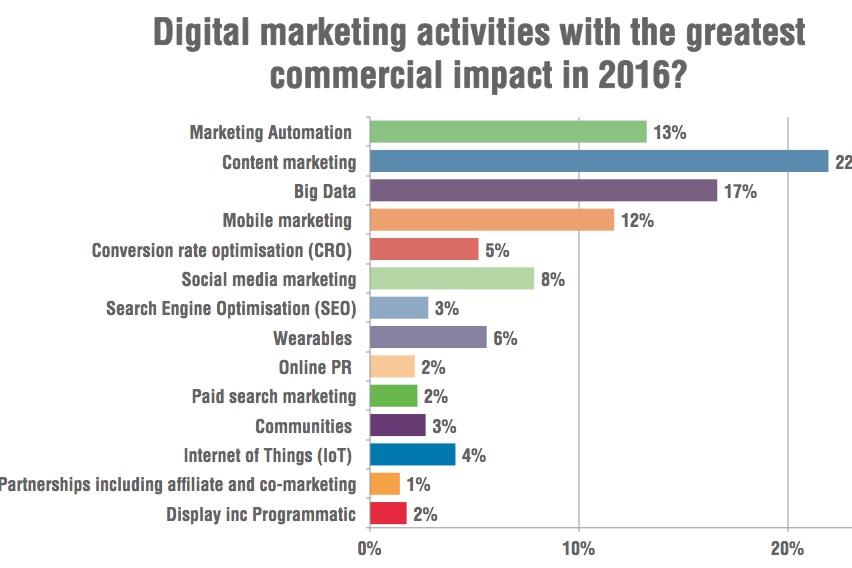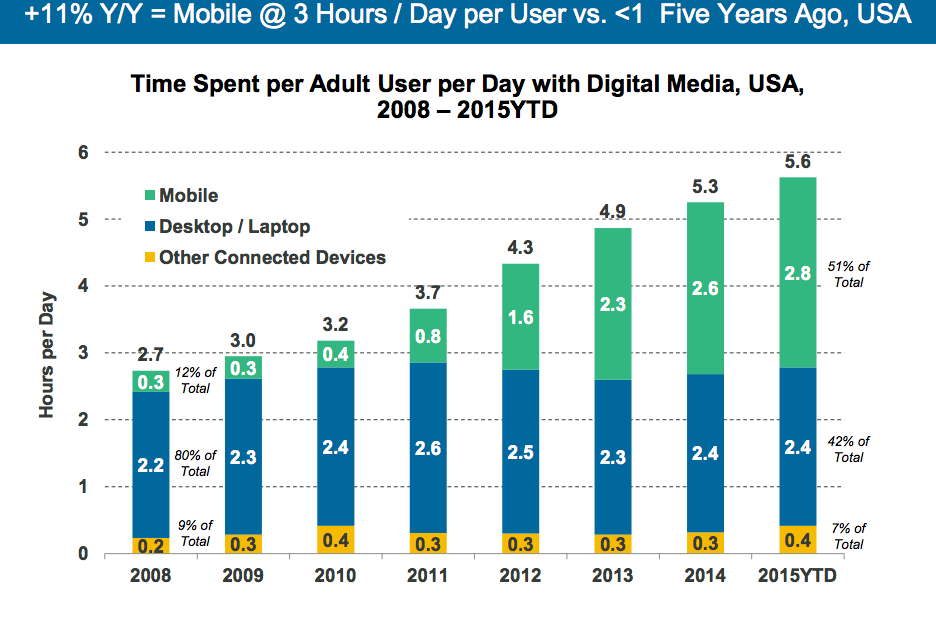At the start of each year, there is always a lot of predictions for the year ahead and the latest marketing trends! As we near the end of the first half of 2016, it as good time as ever to reflect on the early predictions and see how they worked out since. In this article we will illustrate the latest trends in digital marketing which look set to continue into the rest of 2016.
First, something we all knew for quite a while. Traditional vs Digital Marketing already being one-sided match became even more so; the prevalence of online channels influence is clear with 82% of purchasers researching online against 4% using offline only.
Furthermore, the research data below (dated from February this year, conducted by smartinsights.com) clearly shows dominance of content marketing segment.

Image 1 – Source: smartinsights.com
Image 1 – Agenda
- Big Data (including market and customer insight and predictive analytics)
- Content marketing
- Communities (Branded niche or vertical communities)
- Conversion rate optimisation (CRO) / improving website experiences
- Display (Banners on publishers, ad networks social media including retargeting and programmatic)
- Internet of Things (IoT) marketing applications Marketing Automation (including CRM, behavioural Email marketing and web personalisation)
- Mobile marketing (Mobile advertising, site development and apps)
- Paid search marketing, e.g. Google AdWords Pay Per Click Online PR (including influencer outreach)
- Partnerships including affiliate and co-marketing
- Search Engine Optimisation (SEO) S
- Social media marketing including Social CRM and Social Customer Care
- Wearables (e.g. Apple Watch, activity trackers, augmented reality)
“If you can take your personality and inject it into the message you share, you’ll be one step ahead in the content marketing game.”
Jason Miller, Global Content Marketing Leader, LinkedIn
Changes in consumer use of digital media and technology is core to understanding trends in digital marketing. It is certainly getting more complex, as today’s customer travels across multiple devices over stretched period of time, particularly for high involvement or high-value purchases, such as insurance or property. Lower value, or so-called everyday goods and services purchases are not far behind as consumer habits set. Also, consumers are increasingly unaware or pay little attention to what digital platform they are using. This particularly highlights the imperative of digital content integration.
Unsurprisingly, the use of mobile marketing will continue to be one of key trends to follow in 2016 and beyond. This creates even more urgency for businesses to formulate their online presence with mobile platforms in mind.

Interestingly enough, most businesses participating in recent polls by smartinsights.com suggested the progress towards fully integrated planning of digital and traditional activities has been made, but there is still a massive room for improvement. Whilst 4% of businesses solely use digital marketing activities, the rest are still combining their efforts with traditional methods. Thus the figure of 5% of those who made the full integration so far looks very slim. On the other hand 33% are both, or actively trying to or will do so in the near future.
Based on these trends and data, it is safe to assume an online content, regardless of the businesses’ size, will play a pivotal role in the marketing activities in times to come. Great news for the creative industries.
